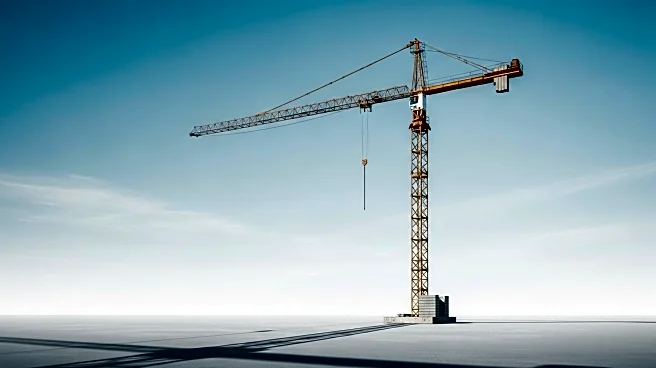What's Happening?
The construction industry is experiencing mixed economic signals, with public-sector projects providing stability while private nonresidential construction spending has declined by 3.7% year-over-year. Infrastructure contracts and data center projects are driving backlog growth, but rising input prices due to tariffs are causing concern. Contractors are facing increased costs, with over 80% receiving notices of price hikes. Labor conditions are also challenging, with increased job openings and layoffs, and a drop in quits indicating anxiety among workers.
Why It's Important?
The divergence between public and private sector construction spending highlights the challenges facing the industry. Public projects, particularly in water and transportation, are crucial for economic stability, but the decline in private spending could impact overall growth. Rising costs and labor issues may lead to project delays or cancellations, affecting contractors' profitability. The situation underscores the need for strategic planning and adaptation to changing economic conditions.
What's Next?
Contractors may need to adjust their strategies to cope with rising costs and labor challenges. The industry could see increased focus on public-sector projects as a stabilizing force. Monitoring economic indicators and adapting to tariff impacts will be essential for maintaining project viability. Stakeholders may advocate for policy changes to address labor and cost issues, potentially influencing future construction trends.
Beyond the Headlines
The construction industry's current challenges may lead to long-term shifts in project planning and execution. The focus on public-sector projects could drive innovation in infrastructure development, while private sector struggles may prompt reevaluation of investment strategies. The labor market dynamics could influence workforce training and recruitment practices, shaping the industry's future landscape.













